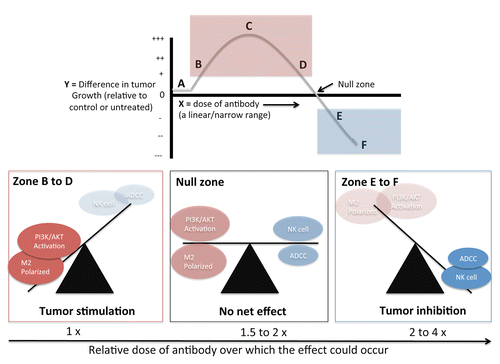Figures & data
Figure 1. The immune response curve to antibody-based anticancer therapeutics. Very low levels of tumor-directed antibody (Zone A) have no effect on tumor growth, but as this dose increases (red zone B-D) tumor growth is stimulated via activation of PI3K/AKT pathway, and high infiltration of M2 polarized macrophages. There is a dose of antibody that generates a maximum stimulatory effect (Zone C). Increasing the dose of antibody finally leads to tumor growth inhibition (Zone E to F) via natural killer (NK) cell mediated antibody-dependent complement cascade (ADCC) and complement-mediated tumor cell lysis. However, this curve goes through a null zone, suggesting there is a dose of antibody that generates stimulatory and inhibitory mechanisms in quantities that mutually cancel each other out to give no net overall effect on tumor growth.

